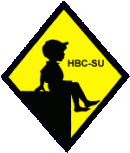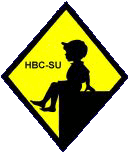
Uniforms and clothing at New Zealand primary schools have varied over time. There were also differences at the different types of schools. Most state primary schools through the 20th century do not require a uniform. Private and Catholic primary schools, however, do mostly require uniforms--generally the typical traditional British school uniform of sweater, tie, shorts, and knee socks. As a result, in the state system you have the rather incongrous system of little elementary school kids going to school in long pants and big secondary boys going to school in short pants and knee socks. Many New Zealand elementary children look forward to the day that they begin intermediate school and wear uniforms like the big boys. The novelty of the uniform, however, for many soon wears off. Some state primary schools began to introduce uniforms in the late-1990s. This was especially pronounced in the cities. It is a trend that has become more pronounced in the 2000s.
Most state primary schools through the 20th century did not require a uniform. American usage is elementary schools. Rather the primary children mostly wore the popular fashions of the day. Some mothers would buy grey school uniform items, but mostly the children wore their regular clothes to school. As a result, in the state system you have the rather incongrous system of little elementary school kids going to school in long pants and big secondary boys going to school in short pants and knee socks. Many New Zealand elementary children look forward to the day that they begin intermediate school and wear uniforms like the big boys. The novelty of the uniform, however, for many soon wears off. Some state primary schools began to introduce uniforms in the late-1990s. This was especially pronounced in the cities. It is a trend that has become more pronounced in the 2000s.
Catholic primary schools as in the United States were founded as a separate system. The Catholic schools were integrated into the state system during the 1970s and 80s. They were allowed to retain their Catholic chasracter. , The Catholoc primary schools, unlike the staste primary schools required uniforms. Each school adopted its own unifirm. They chose the typical traditional British school uniform of sweater, tie, shorts, and knee socks. Blazers and casps, however, were not common. The schools wanted to keeop the uniform cost low.
Private primary schools as iun Britain are called preparatory schools. The age range is a little different. Many acquired pre-pre divisions. And the age range included older children that in the state system attended intermediate schools. These schools dis require uniforms--generally the typical traditional British school uniform of sweater, tie, shorts, and knee socks. And most had blazers and caps, althouh the caps had been dropped by the 1990s.
Related Chronolgy Pages in the Boys' Historical Web Site
[Main Chronology Page]
[The 1900s]
[The 1910s]
[The 1920s]
[The 1930s]
[The 1940s]
[The 1950s]
[The 1960s]
[The 1970s]
[The 1980s]
[The 1990s]
[The 2000s]
Navigate the Boys' Historical Clothing School Uniform Pages
[Return to the Main New Zealand School Type Level Page]
[Return to the Main New Zealand School Type Page]
[Main National School Uniform Page]
[Australia]
[England]
[France]
[Germany]
[Ireland]
[Italy]
[Japan]
[Scotland]
[United States]
Navigate the Boys' Historical Clothing Web Page
[Introduction]
[Activities]
[Biographies]
[Chronology]
[Clothing styles]
[Countries]
[Bibliographies]
[Contributions]
[FAQs]
[Glossary]
[Images]
[Links]
[Registration]
[Tools]
[Boys' Clothing Home]
